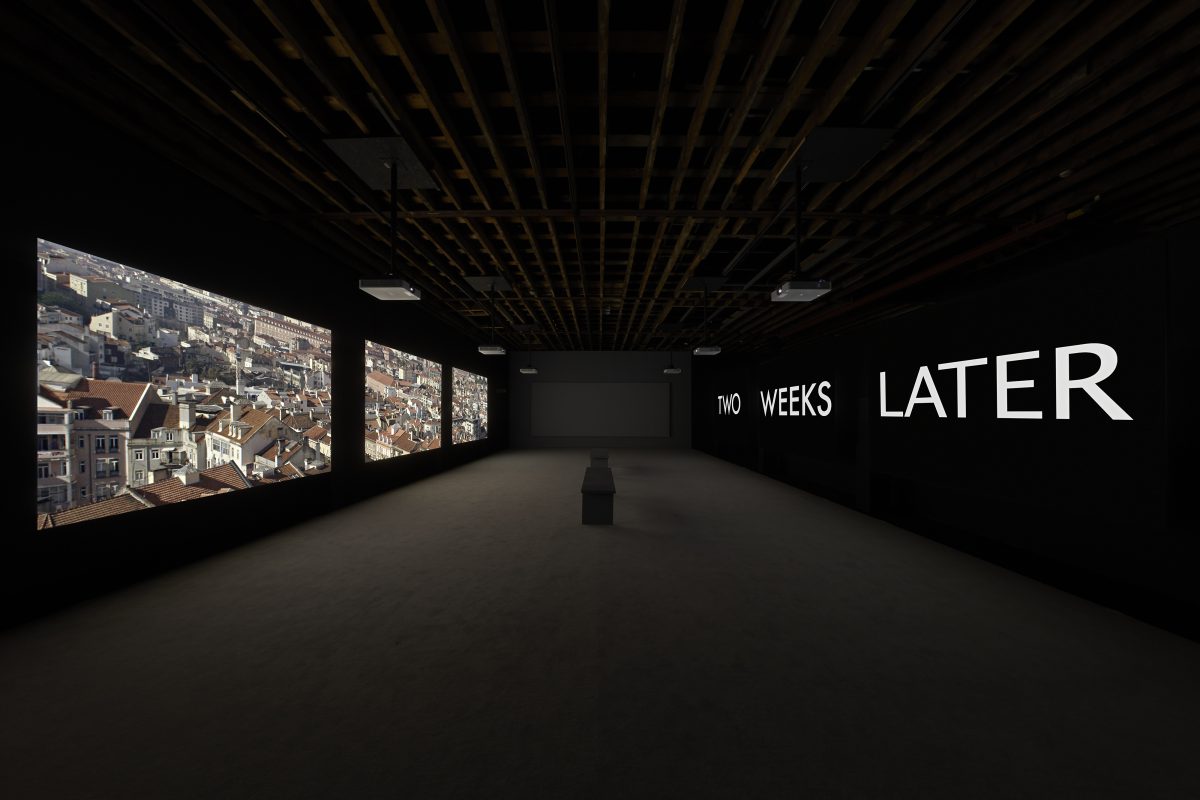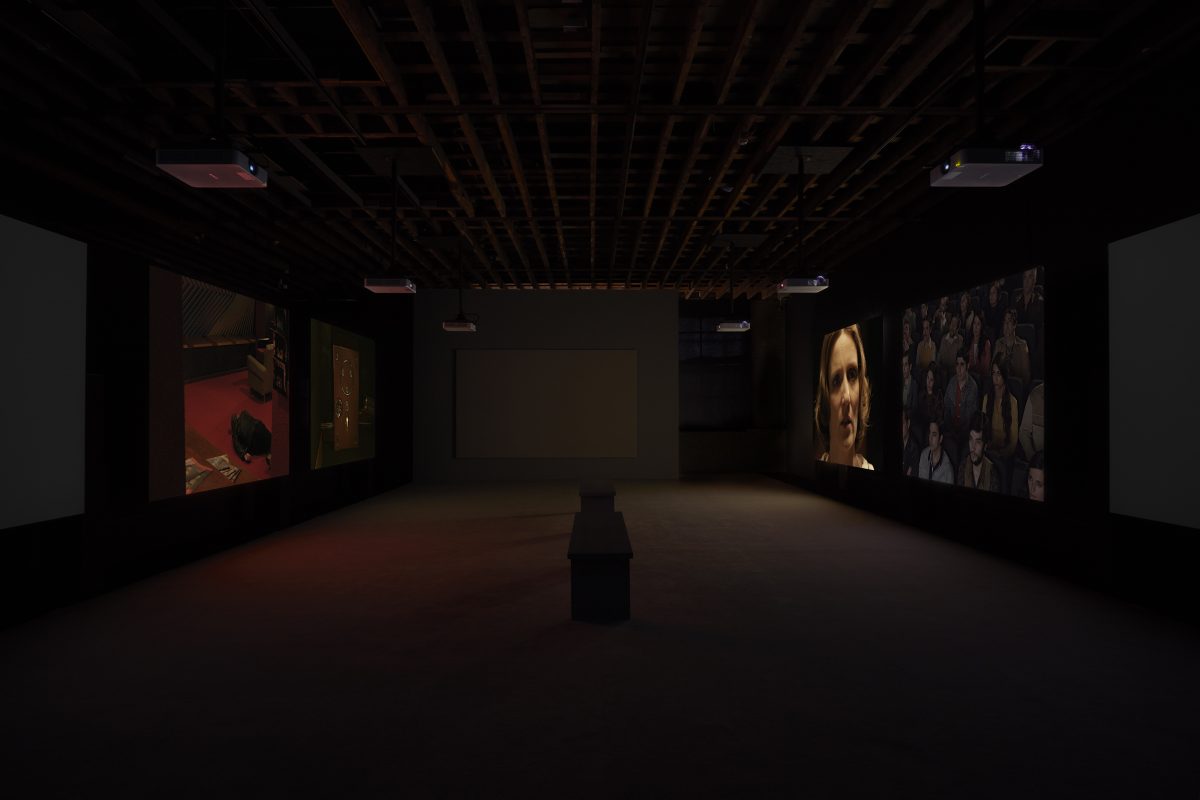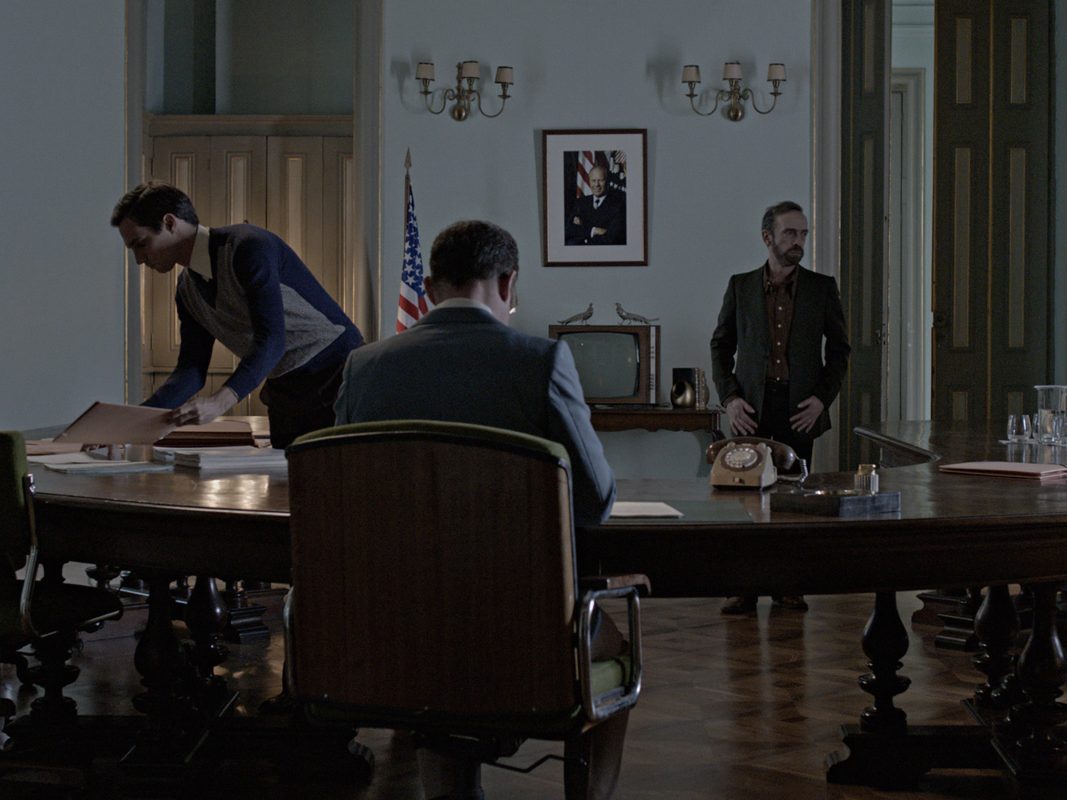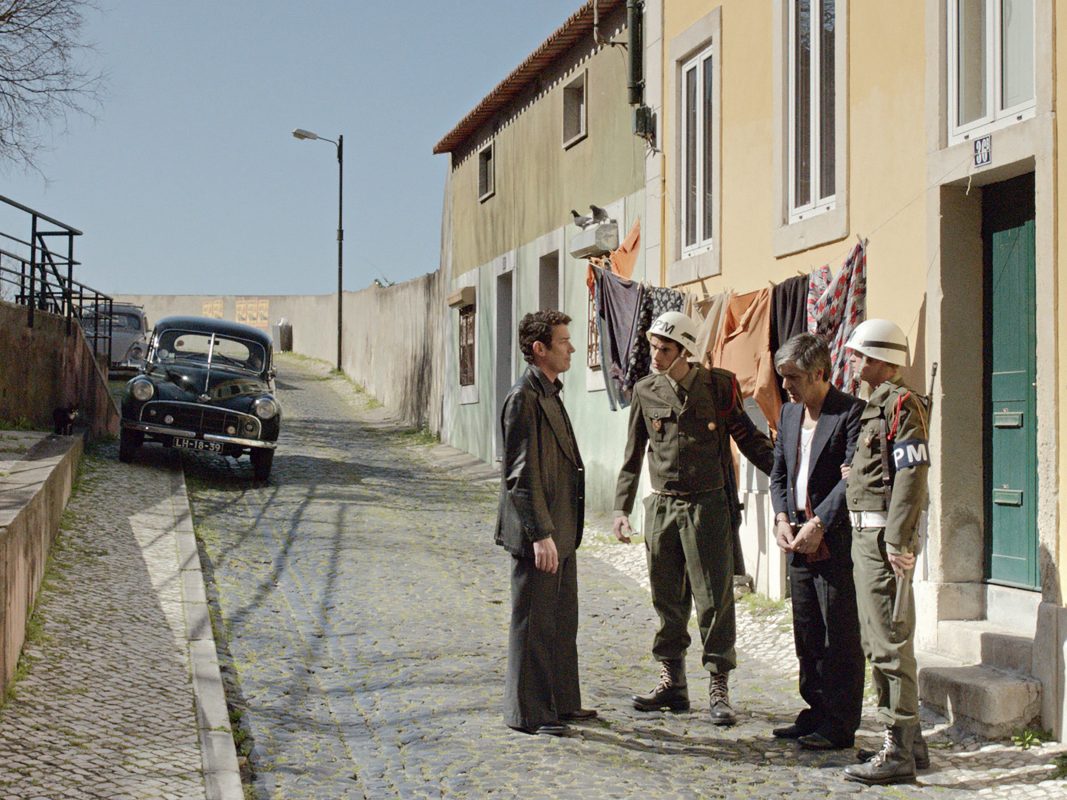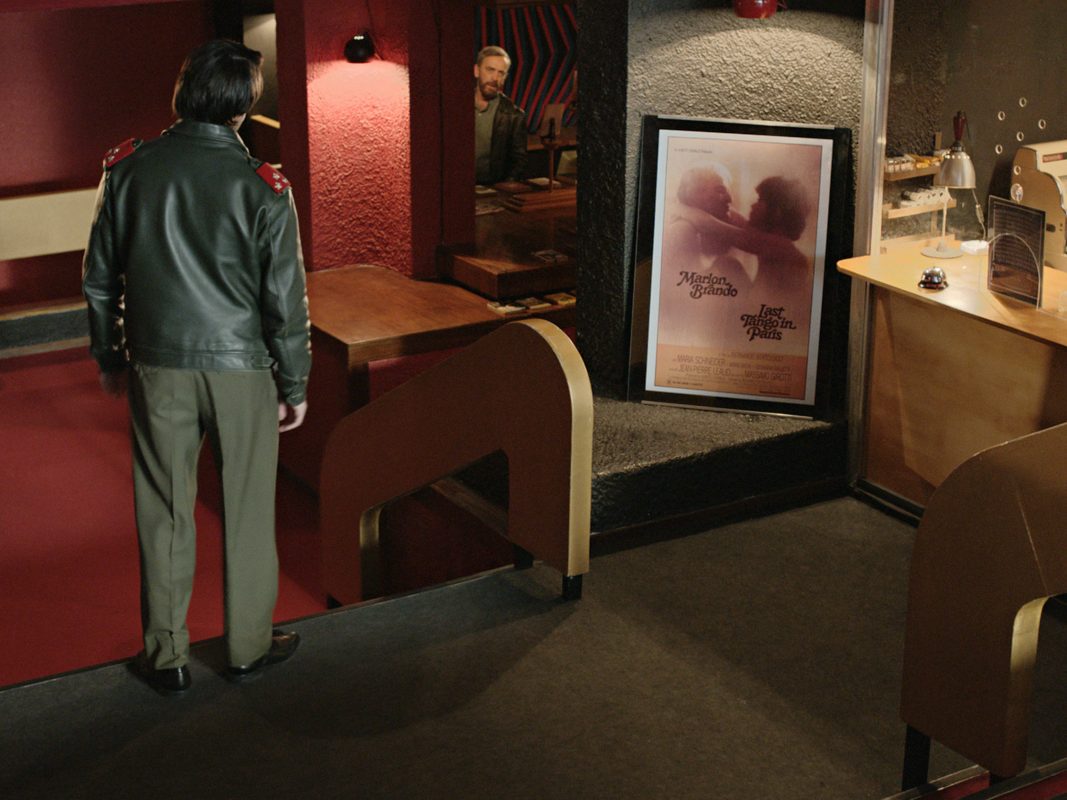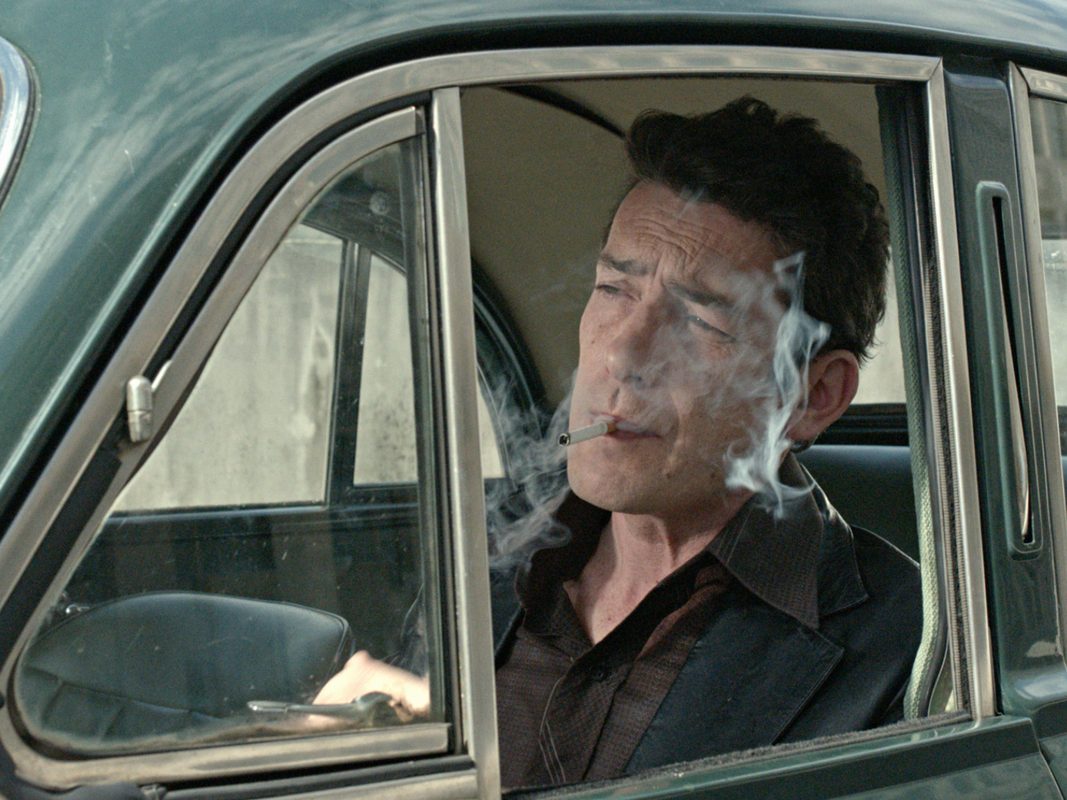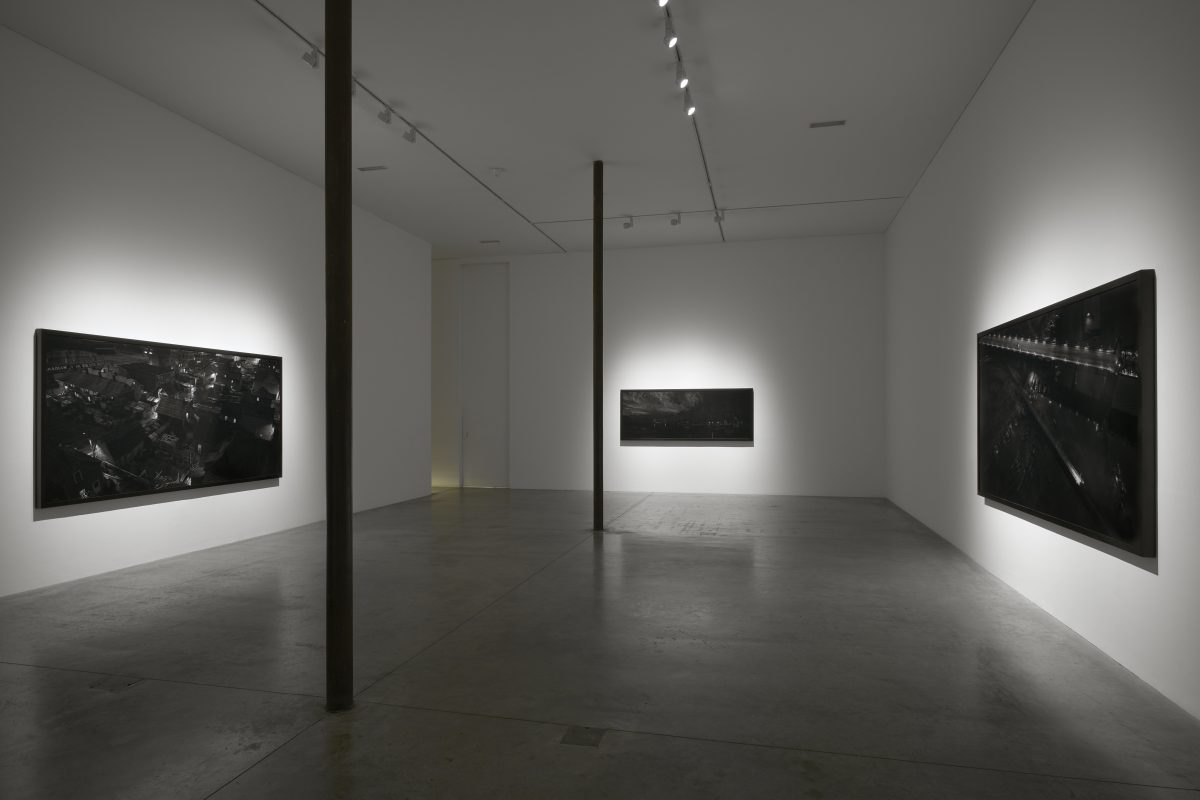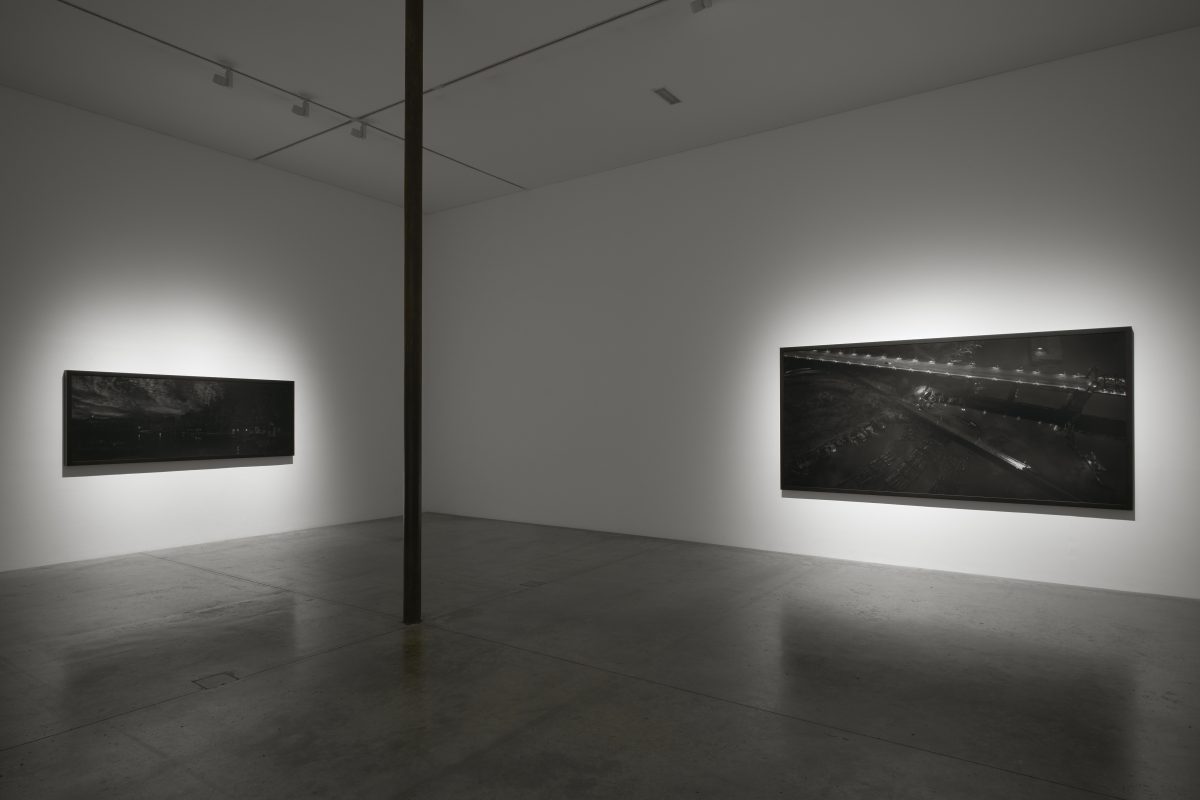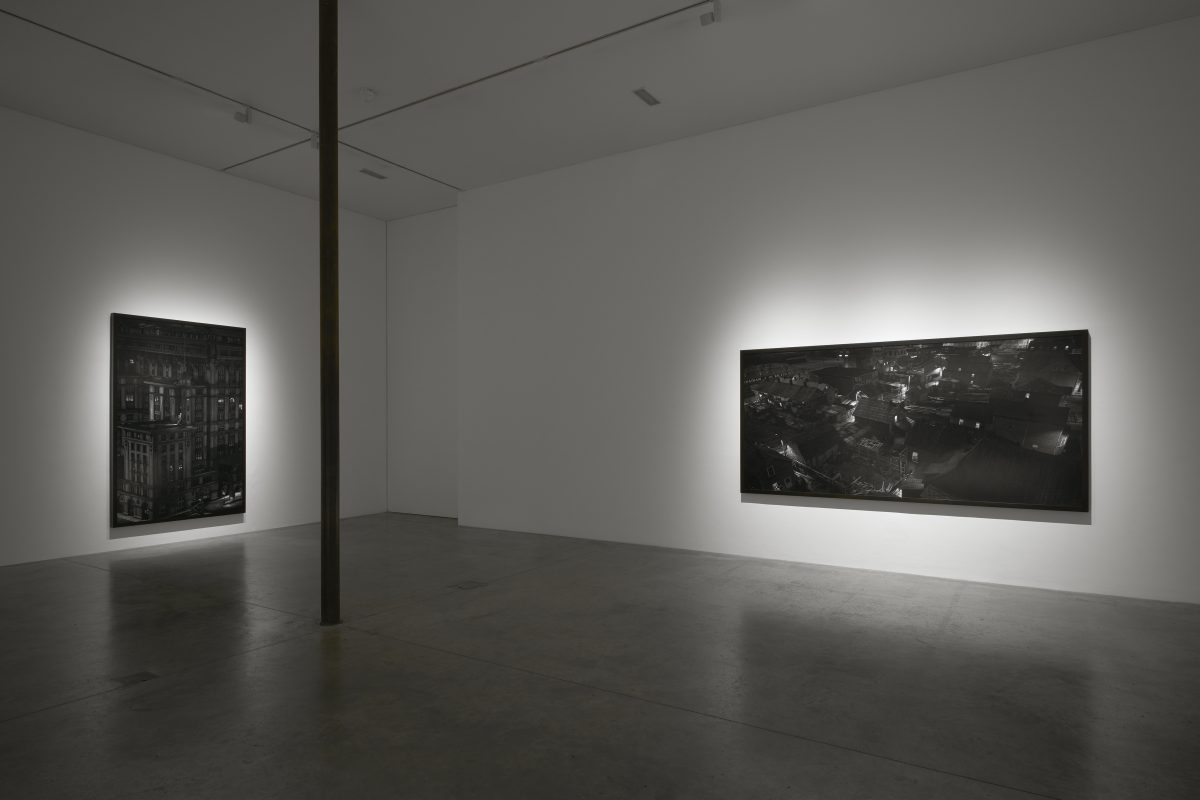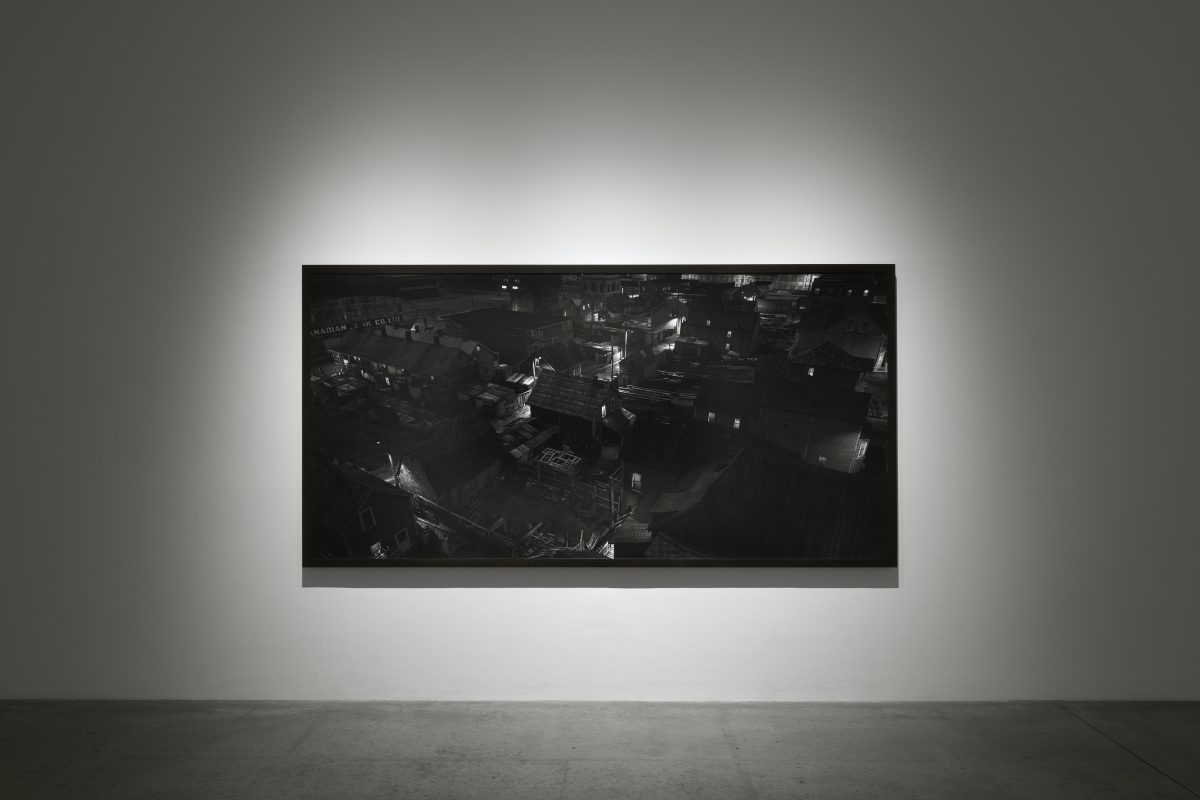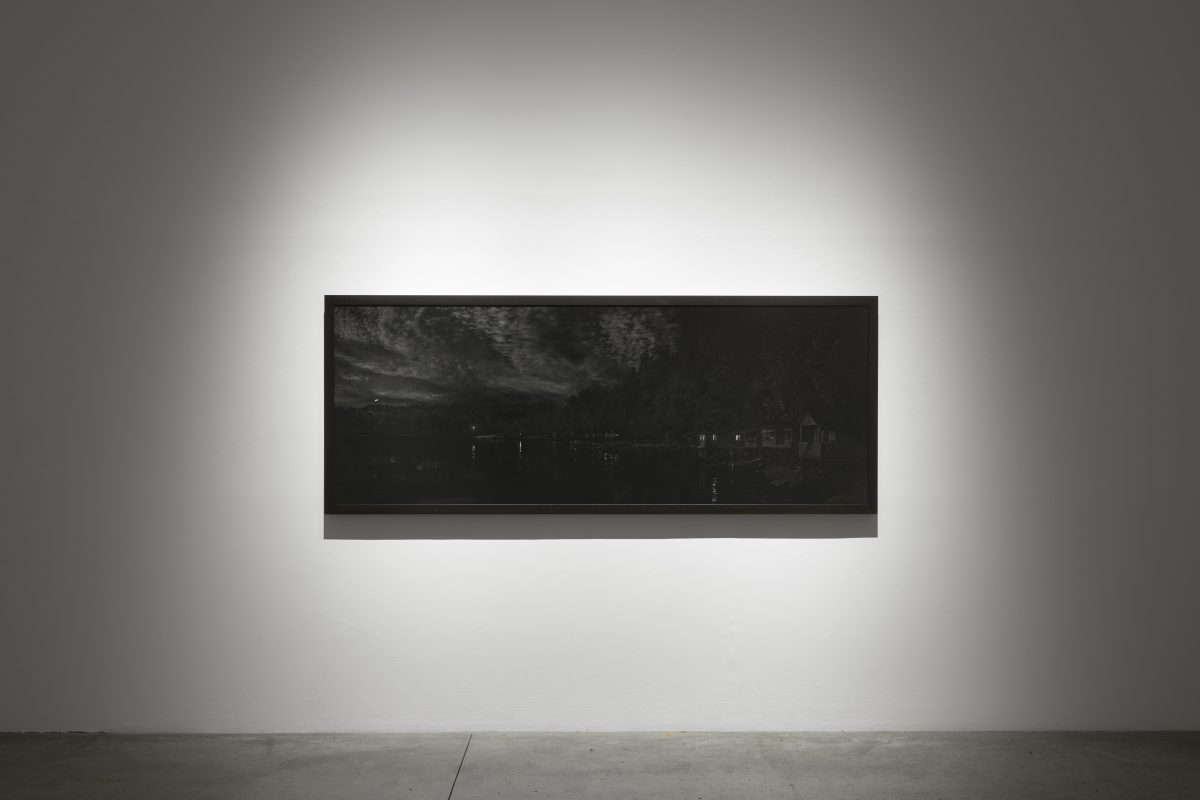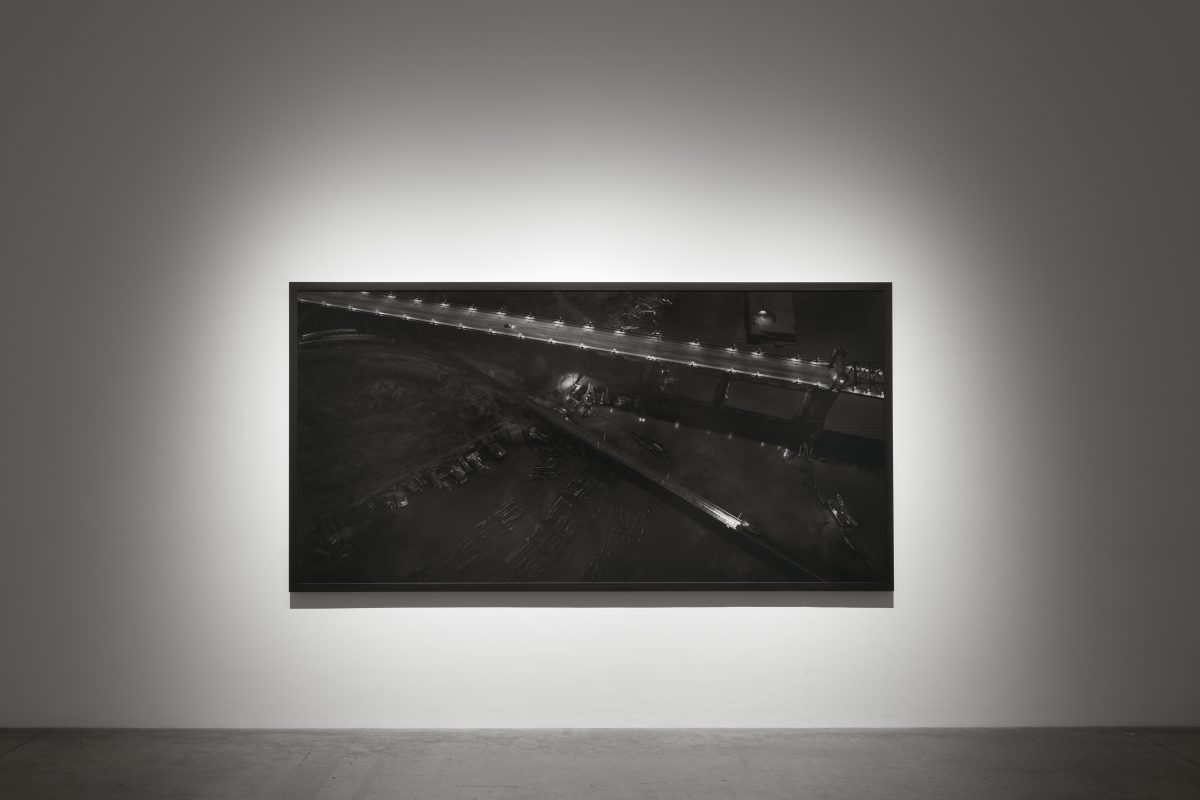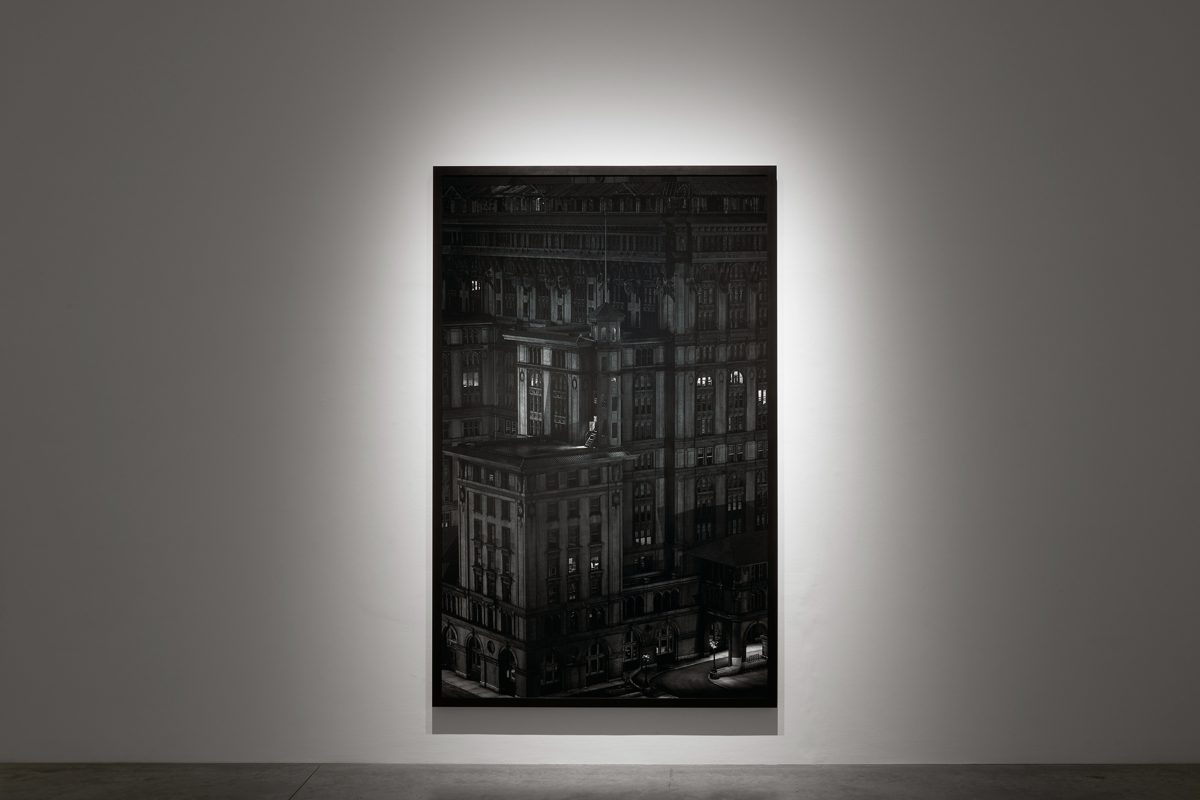Stan Douglas
The Secret Agent
Exhibition review by Daniel C Blight
Victoria Miro
02.02.16 — 24.03.16
In Stan Douglas’ work history seldom gets an easy ride. Non-linear and chopped-up narratives respond to real political events or fictional ones, appropriated and reconfigured from novels and other works of canonical modern literature, themselves complex occurrences. “A rejection of easily consumable messages”, as the gallery puts it, for the artist’s exhibition, The Secret Agent, at Victoria Miro in London, who has also just been announced as the winner of the 2016 Hasselblad Award.
Douglas’ literary references include those writers the art world too often goes to for inspiration, such as Theodor Adorno, Samuel Beckett and Franz Kafka – the climacteric orthodoxy referenced and regurgitated yet again. In this exhibition the artist turns to Joseph Conrad and his novella The Secret Agent: A Simple Tale (1907) in order to produce a 6-channel film work based on the book, in terms of its characters and plot but not its original location. In the other gallery space a set of large, partly computer-generated photographic works line the walls of a dimly lit room. This sullen light just about sums up the exhibition’s atmospherics: CGI images appear as grey, spotlighted enumerations of urban city space, and the room in which the film is installed has that fall-asleep ambience – carpeted yet uncomfortable – as is so often the case with gallery film installation.
Running 53 minutes in length, and neck-achingly split over six projection screens situated in two facing rows, it’s a big ask to sit through the film in its near-feature length duration. I found sitting on the edge of one of the benches allowed me to easily spin around in order to catch new scenes emerging from opposite sides of the room, the transitions of the film aligning with the movement of my body left and right – one rear-end or over the shoulder locus dissolving into another. It is fun for the first few minutes, a bit less amusing after that.
My first thoughts involved the mediocrity of the acting, but one probably shouldn’t take Douglas’ selection of actors at face value. What feels like dramatic parody – as if the viewer is having some postmodern joke played upon them, in which they’re asked to read the deconstruction of linear narrative through the guise of perhaps deliberately unconvincing actorly pastiche – is performed ambiguously by the characters themselves. Or maybe the acting is just simply bad? This is the risk Douglas’ work presents to us as viewers: do we read it closely all the time, or are there moments where the whole thing is a big disguise for something else all together less serious? This is what makes it interesting. As Christine Rose says of Douglas’ study of narrative and temporality in her book The Past is the Present; It’s the Future Too (2012), “It declares its necessity and persistence while performing its crisis and near-exhaustion”. Is it then the case that The Secret Agent by Douglas tells us something about Conrad’s writing really, or about Douglas’ own practice, or perhaps both, or indeed about Portugal in the 1970s? This is both history and ambiguity in crisis, and its hard not to find it intriguing, even if it rubs up against itself in all sorts of awkward ways.
For Douglas’ film the novella is re-staged in 1970s Portugal as opposed to the 1880s London of Conrad’s original. In the book the government detective Mr. Verloc – who also leads a double life running a sex shop – is friends with, and a spying member of, a group of ineffective anarchists who plot, when not drinking and smoking, to execute a terrorist bomb attack, electing Verloc to carry out the deed. The bombing goes wrong of course – a reference to the actual attempted bombing of Greenwich Observatory by Martial Bourdin in 1894, which ended in not much other than him blowing his own body up unintentionally in Greenwich Park. In the film, Verloc’s partner’s son is involved, paying the explosive consequences of Verloc’s crazed mission himself. As Verloc’s colleague, Chief Inspector Heat, recalls of the son – in near proximity to the eavesdropping and henceforth catastrophically upset Mrs. Verloc – “I tell you they had to fetch a shovel to gather him up with,” his body having been inadvertently blown to fleshy pieces all over the ground of the Royal Park.
The humour of these somehow ridiculous characters is clear, and it is this element of the book that Douglas’ film excels at recreating. The dialogue offers yet more intellectual satire, evoking some of the profound and humorous turns of phrase one might associate with a certain side of the anarchist left. Conrad’s writing captures this affect well in describing the character Michaelis, purportedly based on the real life nineteenth-century Russian anarchists Peter Krupotkin and Mikhail Bakunin: “Michaelis by staring unwinkingly at the fire had regained that sentiment of isolation necessary for the continuity of his thought. His optimism had begun to flow from his lips. He saw Capitalism doomed in its cradle, born with the poison of the principle of competition in its system. The great capitalists devouring the little capitalists, concentrating the power and the tools of production in great masses, perfecting industrial processes, and in the madness of self-aggrandisement only preparing, organising, enriching, making ready the lawful inheritance of the suffering proletariat.”
The narrative of the book itself remains relatively straightforward, but where the film might follow suit, foregrounding character development, anarchist politics and well-executed, intellectually jocular dialogue as Conrad’s novella does, Douglas instead comes stylistically unstuck. His decision to locate the film in 1970s Portugal during the “Carnation Revolution” runs counter to Conrad’s Soho of 1880s London with its humorous sense of anarchistic impetuosity the characters portray in the book. While this sense of political hopelessness remains in the film, it is overshadowed by the “Hollywood thriller” aesthetic The Secret Agent depicts. Its embracing of a different kind of visual humour through the stylings of 1970s costume and set design leaves behind some important parts of contextual and comedic nuance the novella arouses, as it relates to London and its underground liberatory politics at the end of the nineteenth century.
With the partly computer-generated photographs, things become less colourful. These large, grey panoramic images are technically accomplished. Douglas wraps 2D digital images around 3D computer-rendered buildings, meticulously evoking a sense of film noir space in the dirty urban city. With titles such as Hogan’s Alley (2014), Lazy Bay and Burntown (both 2015), an empty night-time scene, reminiscent of a computer game, finds its strange image in a high art, white cube gallery space. The urban settings evoke the underbelly of a city complete with gamblers, musicians, alcohol and drugs, and were used in a simultaneous theatre production Douglas worked on with screenwriter Chris Haddock, named Helen Lawrence (2015).
The exhibition is complex yet underwhelming: the various senses of space, both physical and intellectual, it elicits don’t always sit comfortably side by side. This is Douglas’ postmodern pastiche at work and, despite its strengths, however celebrated but outdated, it is the gallery space that eventually lets it down. Why is this work in a gallery? The Secret Agent film might have been stripped down and built back up in single screen format for the cinema, with some more nuanced consideration of its historical context and Conrad’s novella. The photographs just make me want to see the theatre production, on their own reading like sketchbook objects for sale, clumsily framed and perhaps produced by the artist at the behest of the gallery’s commercial pressures. A rejection of easily consumable messages perhaps, but less conveniently this might well be rich and interesting work poorly executed. ♦
All images courtesy of David Zwirner and Victoria Miro. © Stan Douglas
—
Daniel C. Blight is a writer based in London. He is co-editor of Loose Associations, a periodical on image culture published by The Photographers’ Gallery; visiting tutor in the department of Critical & Historical Studies, Royal College of Art and lecturer in photography at the University of Brighton.

